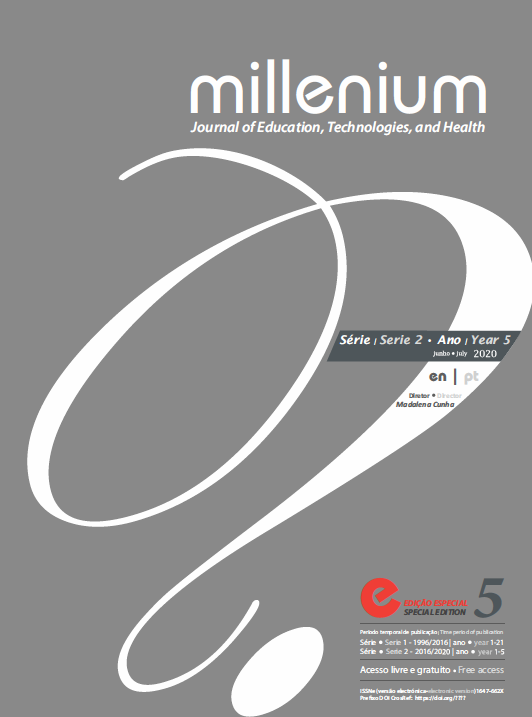Control of surface hygiene
comparability of the atp method bioluminescence versus visual scale
DOI:
https://doi.org/10.29352/mill0205e.34.00342Keywords:
frequent surfaces, visual method, luminometerAbstract
Introduction: Health care associated infections (IACS) have been related to the presence of multiresistant microorganisms on the surfaces and it is necessary to monitor their hygiene to ensure environmental safety. The application of the visual scale is simplifying, but the use of the luminometer, Adenosine Triphosphate Bioluminescence method, is promising in the control of hygiene.
Objectives: Evaluate the effectiveness of the surface cleaning process.
Methods: The prospective observational study was performed at a critical unit for five consecutive days. The sampling technique was non-probabilistic for convenience, being applied to the visual scale and the luminometer, before and after the hygiene of the surfaces. The hygienization process was performed by the same operating assistants, using the two step method and detergent / disinfectant product.
Results: The sample includes 300 observations (150 before / 150 after) in the selected touch areas. Of the 131 observations, for a satisfactory value, 56 were measured by the luminometer and 75 by the visual scale. For unsatisfactory values, 169 observations, 94 were measured by the luminometer and 75 by the visual scale. After the hygienization process, from the observations with unsatisfactory values, 31 were identified by the luminometer and 18 by visual scale. Significant differences were found for unsatisfactory values (<500 RLU) in the luminometer and for satisfactory values (> 500 RLU) on the visual scale.
Conclusions: The ATP method presents itself as an educational and monitoring / auditing tool to measure the quality of hygiene of high touch surfaces, and it is necessary to validate its contribution in the prevention of IACS.
Downloads
References
Bathke, J., Cunico, P. d., Maziero, E. C., Cauduro, F. L., Sarquis, L. M., & Cruz, E. D. (2013). Infraestruturas e adesão à higienização das mãos: Desafios à segurança do paciente. Rev Gaúcha Enferm, 34(2), 78-85.
Boyce, J. M., Havill, N. L., Dumigan, D. G., Golebiewski, M., Balogun, O., & Rizvani, R. (2009). Monitoring of effectiveness of hospital cleaning practices by use of an adenosine triphosphate bioluminescence assay. Infection control and hospital epidemiology, 30(7), 678-683. DOI: 10.1086/598243
Care, H. (2013). 3M - Manual do usuário. Alemanha: 3M Deutschland GmbH.
Carling, P. C., MD, & Bartley, J. M. (2010). Evaluating hygienic cleaning in health care settings: What you do not know can harm your patients. American Journal of Infection Control, 38(5 Suppl 1), S41-50. DOI: 10.1016/j.ajic.2010.03.004
Dancer, S. (2004). How do we assess hospital cleaning? A proposal for microbiological standards for surface hygiene in hospital. JHI, 56, 10-15.
Dancer, S. (2009). The role of environmental cleaning in the controlo acquised infection. Journal of Hospital Infection, 1-8.
Ferreira, H. (2012). Dissertação para obtenção de grau de mestre em Infeção em Cuidados de Saúde – Utilização do Método ATP bioluminescência na avaliação da eficácia da limpeza e desinfeção de superfícies em cuidados de saúde primários
Giles, S. A. (2012). Acedido em www.infectioncontroltoday.com
Gomes, C.H., Barros, A.A., Andrade, M.C.L., & Almeida, S. (2007). Adesão dos profissionais de saúde à lavagem das mãos em enfermaria de clínica médica e cirúrgica. Rev. Med. Minas Gerais, 5-9.
Guh, A., & Carling, P. (2010). Options for evaluating environmental cleaning. National Center for Emerging and Zoonotic Infectious Diseases.
Oliveira, A. C., & Viana, R. E. (2014). Adenosina trifosfato bioluminescência para avalaição de limpeza de superfícies: uma revisão integrativa. Revista Brasileira de Enfermagem REBEn, 67(6), 987-93. DOI: https://doi.org/10.1590/0034-7167.2014670618
Ordem dos Enfermeiros (2016). Cuidados à pessoa com doença renal crónica terminal em hemodiálise – Guia orientador de boa Pática, pp.3-97.
Paiva, J. A. (2015). É uma miragem pensar que podemos caminhar para a infeção zero. Tecno hospitalar, 67, 4-8.
Pina, E. (2012). Métodos de Avaliação de Limpeza de Superfícies. Higiene Hospitalar, pp. 2-4.
Richards, V. (2015). National institutes of health/U.S. National Library of Medicine. Acedido em Health day. www.nlm.ninh.gov/medlineplus/news/fullstory.
Rigotti, M. A., Ferreira, A. M., Nogueira, M. C., Almeida, M. T., Guerra, O. G., & Denise, A. (2015). Evalution of three surface friction techniques for the removal of organic matter. Texto & Contexto- Enfermagem, 24(4), 1061-1070. DOI: https://doi.org/10.1590/0104-0707201500003690014
Reis, L. (2012). Sistema de Lavagem de 2 Passos. Tecno Hospital, pp. 38,43.
Rocha, J. G. (2015). Conceção dos espaços e materiais de revestimento. Tecno Hospital 67, 12-16.
Sherlock, O. C., O´Connell, N., Creamer, E., & Humphreys, H. (2009). Is it really clean? An evaluation of the efficacy of four methods for determining hospital cleanliness. Journal of Hospital Infection, 72(2):140-146. DOI: 10.1016/j.jhin.2009.02.013
Ferreira, H. (2012). Utilização do método ATP bioluminescência na avaliação da eficácia da limpeza e desinfeção de superfícies em cuidados de saúde primários (tese de mestrado). Universidade Católica Portuguesa Instituto de Ciências da Saúde
Downloads
Published
How to Cite
Issue
Section
License
Authors who submit proposals for this journal agree to the following terms:
a) Articles are published under the Licença Creative Commons (CC BY 4.0), in full open-access, without any cost or fees of any kind to the author or the reader;
b) The authors retain copyright and grant the journal right of first publication, allowing the free sharing of work, provided it is correctly attributed the authorship and initial publication in this journal;
c) The authors are permitted to take on additional contracts separately for non-exclusive distribution of the version of the work published in this journal (eg, post it to an institutional repository or as a book), with an acknowledgment of its initial publication in this journal;
d) Authors are permitted and encouraged to publish and distribute their work online (eg, in institutional repositories or on their website) as it can lead to productive exchanges, as well as increase the impact and citation of published work
Documents required for submission
Article template (Editable format)





